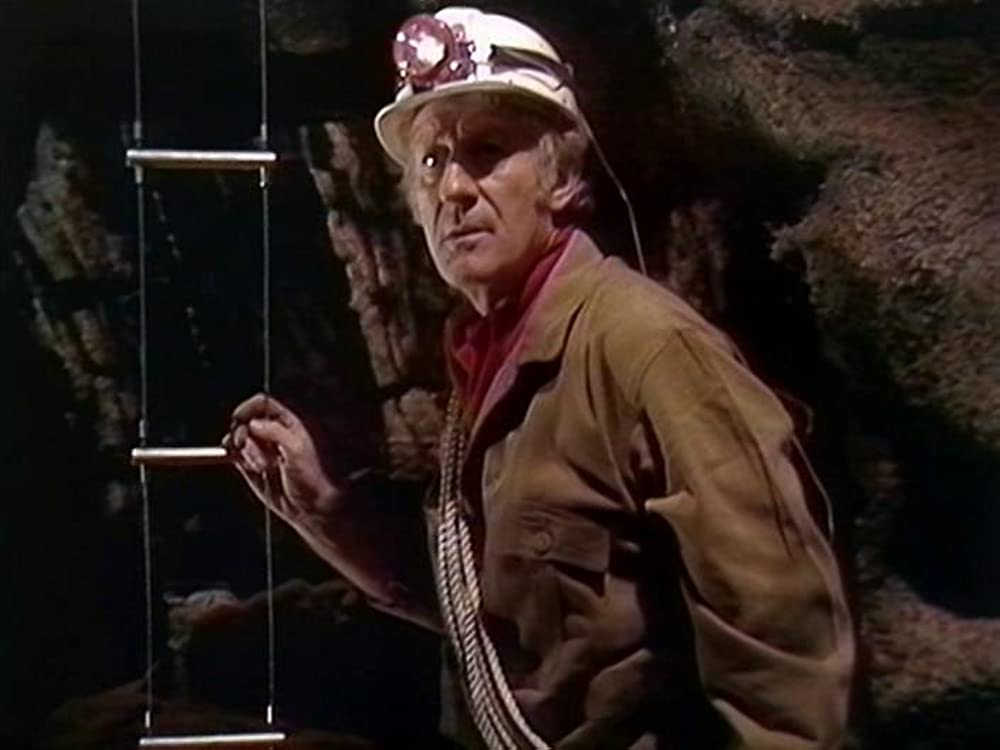Doctor Who is a British science fiction television series that has been captivating audiences around the world for more than half a century. One of the most memorable and iconic villains in the show’s history are the Silurians. These ancient reptilian creatures made their first appearance in the 1970 episode «Doctor Who and the Silurians», and have since become a beloved part of the Doctor Who universe.
The Silurians are a highly advanced species that lived on Earth millions of years before humans. They were forced to go into hibernation due to changes in the planet’s atmosphere, but are awakened when humans begin drilling into their underground chambers. The Silurians view humans as a threat to their existence and seek to reclaim the planet as their own.
Throughout their appearances in Doctor Who, the Silurians have been portrayed as formidable adversaries, with their advanced technology and superior physical abilities. They have also been shown to have a complex and nuanced society, with different factions and leaders who hold differing opinions about how to interact with the humans.
Overall, the Silurians are a fascinating and enduring part of the Doctor Who mythos, and continue to be a fan favorite to this day.
Exploring the Significance of Silurians in Doctor Who 1970: A Comprehensive Guide
Doctor Who, a British science fiction television series, has captured the imagination of audiences for decades. One of the most memorable villains in the show’s history is the Silurians, creatures that resemble humanoid lizards. In this comprehensive guide, we will explore the significance of Silurians in Doctor Who 1970.
The Origin of the Silurians
In the show’s canon, the Silurians are an ancient race that lived on Earth before humans evolved. They went into hibernation millions of years ago to escape a disaster that threatened their planet. In the 1970 episode «Doctor Who and the Silurians,» they are awakened from their slumber by the drilling of a research center.
The Significance of the Silurians
The Silurians represent a unique challenge for the Doctor, the show’s protagonist. They are not just mindless monsters to be defeated, but a civilization with its own culture and values. The Doctor must navigate the complex politics of the Silurians while trying to prevent them from destroying humanity.
Furthermore, the Silurians raise questions about humanity’s place on Earth. If another intelligent species existed before us, what does that mean for our claim to the planet? The Silurians also serve as a cautionary tale about the dangers of unchecked scientific progress. The research center that awakens them is studying the Earth’s crust, but they unknowingly unleash a threat that could destroy the world.
The Legacy of the Silurians
The Silurians have appeared in several Doctor Who episodes since their debut in 1970. They have also inspired other works of science fiction, such as the reptilian Gorn in Star Trek. The Silurians remain a beloved and iconic villain in the Doctor Who universe, and their significance continues to resonate with audiences today.
In conclusion, the Silurians are a fascinating and complex villain in Doctor Who. Their origin, significance, and legacy make them a significant part of the show’s history. Whether you are a longtime fan or a newcomer to the series, the Silurians are a must-see for anyone interested in science fiction and storytelling.
Unraveling the Mystery: Discovering the Identity of the Silurian Lady in Doctor Who
Doctor Who fans have long been fascinated by the Silurians, a species of intelligent reptiles who once ruled the Earth millions of years ago. One particular Silurian, known only as «the Silurian Lady,» has captured the attention of fans for years.
In the episode «The Hungry Earth/Cold Blood,» the Eleventh Doctor encounters a group of Silurians who have been awakened from underground hibernation. Among them is a female Silurian who appears to hold a position of authority.
For years, fans have speculated about the identity of this mysterious Silurian Lady. Some have even suggested that she might be an important figure from Silurian history or mythology. But recently, new evidence has emerged that sheds light on her true identity.
According to the Doctor Who novel «Silhouette,» the Silurian Lady is actually named Restac and holds the title of «Warrior Prime.» This revelation has been met with excitement and relief from fans, who can now put an end to years of speculation.
Restac’s portrayal in the episode is consistent with her title as Warrior Prime. She is shown to be fierce and determined, willing to go to great lengths to protect her people. Her interactions with the Doctor also show a level of intelligence and cunning that befits her position of authority.
Overall, the discovery of Restac’s identity adds a new layer of depth and intrigue to the already fascinating world of the Silurians in Doctor Who. It also serves as a reminder of the show’s ability to create complex and compelling characters, even among its non-human species.
Discover the filming locations of Doctor Who and the Silurians
If you’re a Doctor Who fan, you might be interested in exploring the filming locations of one of its most iconic episodes: The Silurians.
This third serial of the seventh season was first aired in 1970, and it introduced a new race of creatures: the Silurians, an ancient reptilian race that lived on Earth before humans.
If you want to follow in the footsteps of the Doctor and his companions and visit the places where the episode was filmed, here are some of the most memorable locations:
- Wookey Hole Caves: This limestone cave system in Somerset was the setting for the Silurian base. You can take a tour of the caves and see the underground river and the Witch’s Kitchen.
- Abbotsbury Swannery: This swan sanctuary in Dorset was used as the location for the village where the Silurians first emerge from hibernation. You can visit the swannery and see the hundreds of mute swans that live there.
- Betchworth Quarry: This disused quarry in Surrey was used for the scenes where the Silurians are drilling into the Earth’s crust. You can’t visit the quarry itself, but you can see it from the nearby footpath.
- Dungeness Power Station: This nuclear power station in Kent was used for the exterior shots of the Wenley Moor research centre. You can’t visit the power station itself, but you can see it from the public beach.
- Westminster Bridge: This iconic bridge in London was used for the scene where the Silurians attack the city. You can walk across the bridge and enjoy the views of the Thames and the Houses of Parliament.
Visiting these locations will give you a new appreciation for the creativity and ingenuity that goes into making a Doctor Who episode. Who knows, you might even encounter a Silurian or two!
Unveiling the Mystery of the Lizard in Doctor Who: All You Need to Know
If you’re a fan of Doctor Who, then you’ve definitely encountered the Silurians at some point. These lizard-like creatures have been a recurring presence throughout the series, and their origins and motivations have remained a mystery to many viewers. In this article, we’ll explore the history of the Silurians and shed some light on the secrets of these reptilian beings.
The Origins of the Silurians
The Silurians were first introduced in the 1970s, during the Third Doctor’s tenure. They were depicted as an ancient race of reptilians who had gone into hibernation beneath the Earth’s surface millions of years ago. When they were awakened by a drilling project, they emerged to find that humans had become the dominant species on the planet.
The Silurians were initially hostile towards humans, seeing them as intruders on their land. However, the Doctor was able to negotiate a peace settlement between the two species, and the Silurians retreated back underground to continue their hibernation.
The Silurians’ Motivations
Since their introduction, the Silurians have been portrayed as a complex and nuanced species. While they can be hostile towards humans, they are not necessarily evil. They have their own motivations and desires, and often act out of self-preservation.
The Silurians are also shown to be highly intelligent and advanced, with a deep understanding of science and technology. They have their own society and culture, which is often at odds with human civilization.
The Silurians in Modern Doctor Who
The Silurians have made several appearances in the modern era of Doctor Who, most notably in the episodes «The Hungry Earth» and «Cold Blood.» In these episodes, the Doctor encounters a group of Silurians who have been awakened from their hibernation by a drilling project.
Once again, the Silurians are shown to be a complex and nuanced species. They are not inherently evil, but they are fiercely protective of their own kind. They are willing to make sacrifices to ensure their survival, even if that means engaging in conflict with humans.
In Conclusion
The Silurians are a fascinating and mysterious species in the Doctor Who universe. Their origins and motivations are still being explored, and they remain a source of intrigue and fascination for fans of the show.
Whether you’re a longtime fan of Doctor Who or a newcomer to the series, the Silurians are sure to capture your imagination. So sit back, relax, and enjoy the ride as the Doctor continues to unravel the secrets of these fascinating lizard-like creatures.
In conclusion, «The Silurians» is a classic Doctor Who episode that explores the themes of prejudice, fear, and the consequences of man’s actions. The complex characters and thought-provoking plot make it a standout among the show’s early seasons. The Silurians may have disappeared from our screens for a while, but their legacy lives on in the Doctor Who universe, proving that even in the face of extinction, there is always hope for a brighter future.
In conclusion, The Silurians episode of Doctor Who is a thrilling and thought-provoking adventure that explores themes of prejudice, fear, and the consequences of actions. It’s a great example of how Doctor Who can use science fiction to address important issues and leave audiences with plenty to ponder. The Silurians themselves are fascinating creatures and the episode serves as a reminder that sometimes the greatest threat to humanity comes not from outer space, but from within our own planet. Overall, a must-watch for any Doctor Who fan.


